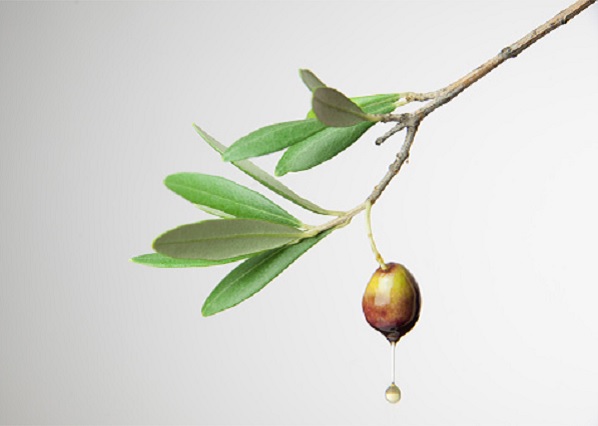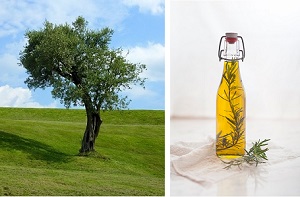Nov 04, 2025
Nov 04, 2025

Olive oil is obtained from the fruit of the evergreen Oilve tree Olea europaea.
 The Olive tree originated in Asia, but now it has been cultivated over the past 3000 years in the Mediterranean countries. It grows up to a height of 15 feet with twisted branches and lance-shaped silvery leaves. The ripened fruit is bluish black in color. The tree grows slowly, but may live for several centuries. Most of the olive crop is used to produce oil. In the process the olives (fruit) are ground to a thick pulp. The pulp is pressed to remove the juices, and is placed in a centrifuge to separate the water from the oil. The oil is greenish yellow in color and is mainly composed of glycerides. It is an edible oil, and is also used to make soaps, ointments, and as a lubricant.
The Olive tree originated in Asia, but now it has been cultivated over the past 3000 years in the Mediterranean countries. It grows up to a height of 15 feet with twisted branches and lance-shaped silvery leaves. The ripened fruit is bluish black in color. The tree grows slowly, but may live for several centuries. Most of the olive crop is used to produce oil. In the process the olives (fruit) are ground to a thick pulp. The pulp is pressed to remove the juices, and is placed in a centrifuge to separate the water from the oil. The oil is greenish yellow in color and is mainly composed of glycerides. It is an edible oil, and is also used to make soaps, ointments, and as a lubricant.
In the Bible (Genesis 9), an olive branch is brought back by the dove to Noah to show that the great flood had receded. Further in the Bible the Olive tree has been a symbol of peace, fruitfulness, freshness, and beauty. Olive is one of the most valuable trees of the whole biblical period.
Nutritionally, one tablespoon (15 ml) of olive oil contains 14 grams of fat, and supplies 129 calories. The fat is monounsaturated, and has a beneficial effect on blood cholesterol levels. In Creece, Italy, and Spain the incidence of cardiovascular diseases is low because of the use of olive oil in the kitchen. The mucilage in olive oil protects the gastrointestinal tract from damage. Extra-virgin olive oil is prepared by cold-pressing the pulp, and the oil obtained has an intense flavor and low acidity.
Today olive oil is prized as an agent controlling blood cholesterol levels, as a preventive against cardiovascular disease, to heal wounds, to protect the digestive tract, as a skin moisturizer, and a wound healer.
Olive oil contains:
(a) Monounsaturated fatty acids 77 percent;
(b) Saturated fatty acids 14 percent;
(c) Polyunsaturated fatty acids 9 percent; Vegetable mucilage and vitamin E.
Medicinal Uses of Olive Oil
Taken internally olive oil stimulates metabolism, promotes digestion, and lubricates the mucous membranes. On external application it is used to treat dry skin, and chipping nails. It has a significant antioxidant effect. The monounsaturated fatty acids are less easily damaged by oxygen compared to other types of fats. Therefore, lesser free radicals are produced, and damage to various cell membranes is minimized.
To summarize,
Olive oil lowers blood cholesterol levels - LDL (bad) cholesterol levels are lowered, while HDL (good) cholesterol levels remain unchanged or are relatively raised. Thus, oil can replace use of butter and vegetable oils for cooking and for making sandwiches;
Used to treat ear complaints;
Used to moisturize the skin and remove stretch marks; and
To prevent hair loss.
Thus, olive oil is a useful and effective home remedy for many human ailments.
Images (c) gettyimages.com
12-Feb-2017
More by : Dr. Frank S. K. Barar